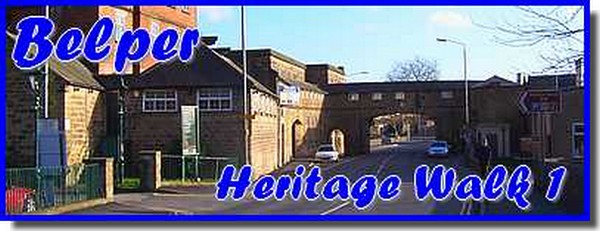
Part 04 - Strutt Streets
w/e 12 May 2013
All this week's pictures were taken
with a Kodak DX6490
This part of the walk begins at the railway bridge
on Long Row where the information board contains illustrations
of Jedediah Strutt and his three sons, William, George and Joseph.
The board records how Jedediah began building his cotton mills
in 1776 adding that he was one of the first industrialists to
provide housing for his workers.
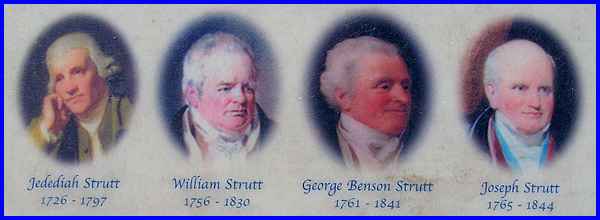
Those houses were built in three phases with Long Row being the
second phase. The first phase is at the end of Long Row on the
east side of Green Lane and the third on the west side is comprised
of three roads running almost parallel to Long Row that Belper
Urban District Council named after Jedediah's sons in 1899 as
William Street, George Street and Joseph Street respectively.
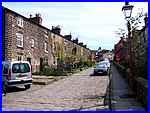 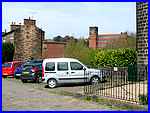 Heading
up Long Row (left) it is worth turning to peer through the gap
created by the demolition of four or five houses that allowed
the building of a bridge over the new railway that arrived in
the town between 1838 and 1840. Today the space created on top
of the bridge has found a use as a convenient parking area for
residents' vehicles (right) and it also permits a good view of
the East Mill in the distance. Heading
up Long Row (left) it is worth turning to peer through the gap
created by the demolition of four or five houses that allowed
the building of a bridge over the new railway that arrived in
the town between 1838 and 1840. Today the space created on top
of the bridge has found a use as a convenient parking area for
residents' vehicles (right) and it also permits a good view of
the East Mill in the distance.
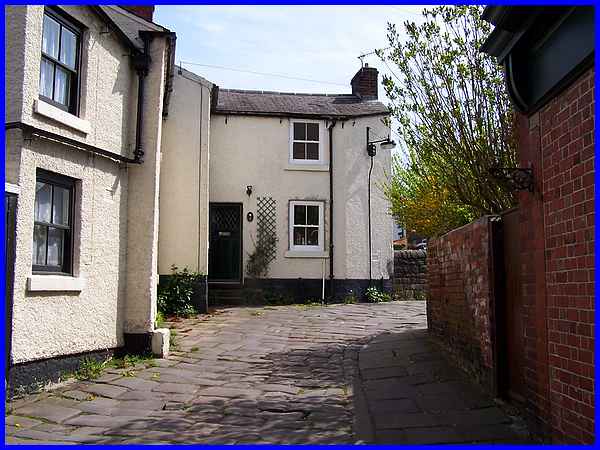
Today's vehicles though were not even in the thoughts of the
builders of the houses in Strutt's day and the only thing missing
from this shot where Long Row turns to meet Green Lane is perhaps
a horse and cart and a couple of children playing on the doorstep.
It would not take much to turn the scene into the set of a Victorian
mystery movie.
|
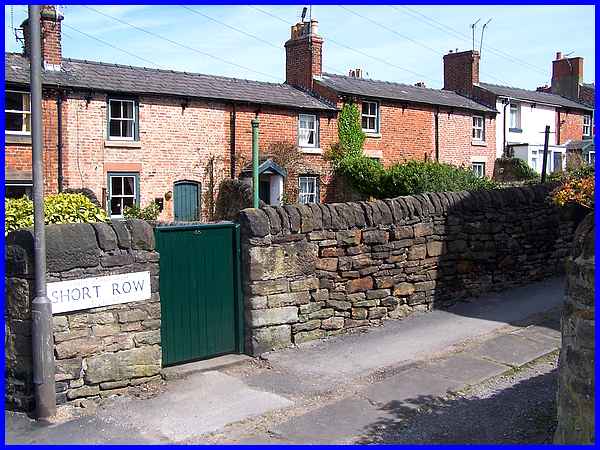
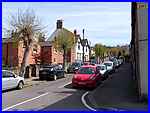 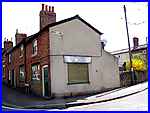 At the top of Long Row and off the left hand
side of Green Lane (right) are four rows of cottages, the first
phase of the Strutt housing. When Mill Street was extended (left)
between the first and second rows, the first row lost their gardens
but the other three like those seen from Short Row (above) still
exist, many of them separated from their neighbours by stout
dry stone walls. At the top of Long Row and off the left hand
side of Green Lane (right) are four rows of cottages, the first
phase of the Strutt housing. When Mill Street was extended (left)
between the first and second rows, the first row lost their gardens
but the other three like those seen from Short Row (above) still
exist, many of them separated from their neighbours by stout
dry stone walls.
|
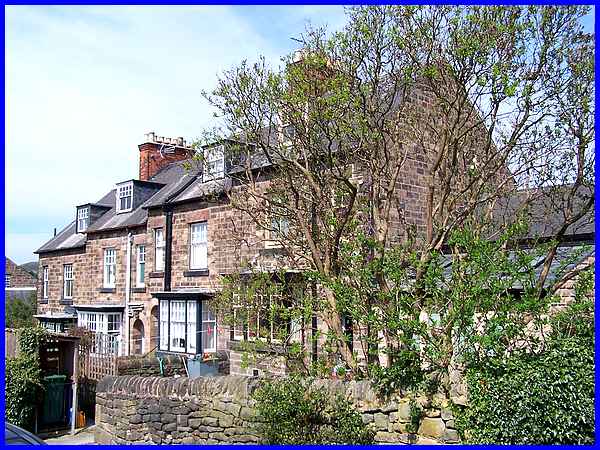
On the other side of Green Lane, the three streets named after
Jedediah's sons run back towards and over the railway line. Almost
opposite Short Row is George Street, the middle street of the
three, and at the top is a fine example of what are known as
cluster buildings.
|
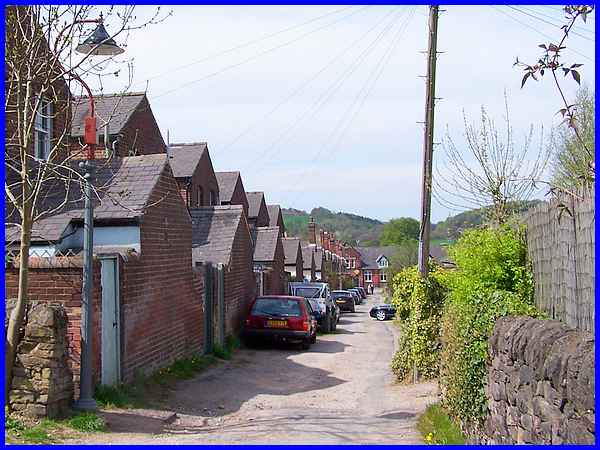
The route of the walk though is down the first of the three streets
as approached from Long Row and this is William Street. Again
it is obvious from the width of the street that it was not anticipated
that it would ever be used by motorised transport. The leaflet
describing the route refers to the first lamp post and tells
the walker to turn left to pass through the channel or alley.
|
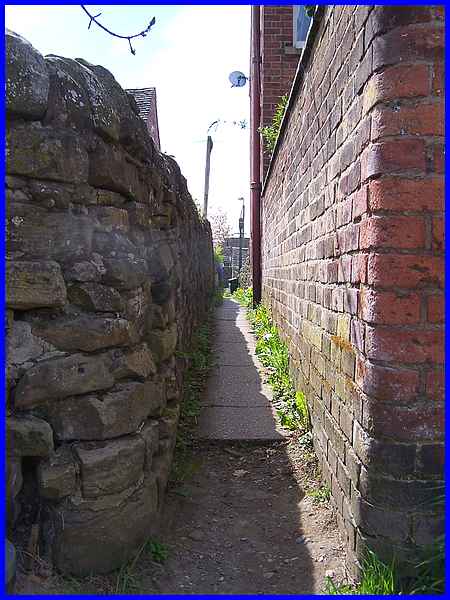
This alley too is not over generous with its width and is perhaps
a reminder that it's not only vehicles that have become larger
with the passage of time since the 1800s but also the human frame
has increased in size too.
|
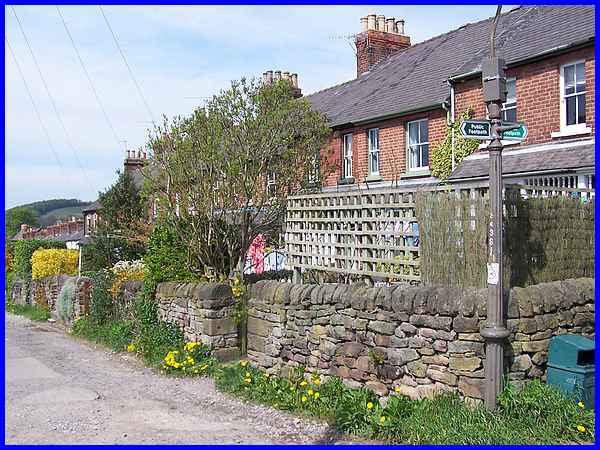
The alley leads through to George Street where the more modern
housing dates from 1840 onwards. There has also been some infilling
since then with more modern buildings.
|
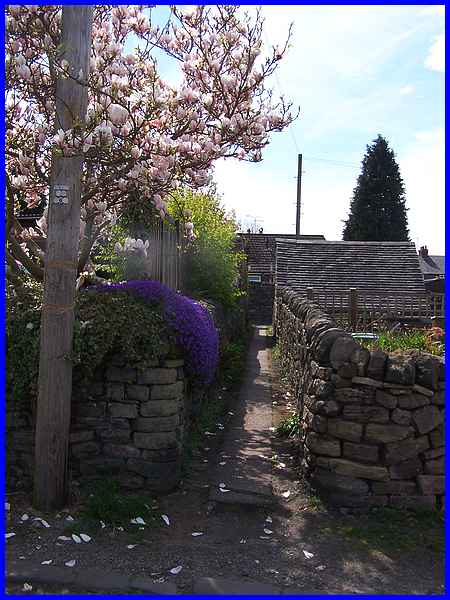
Another shorter but equally narrow alley straight across from
the first leads from George Street through to Joseph Street.
|
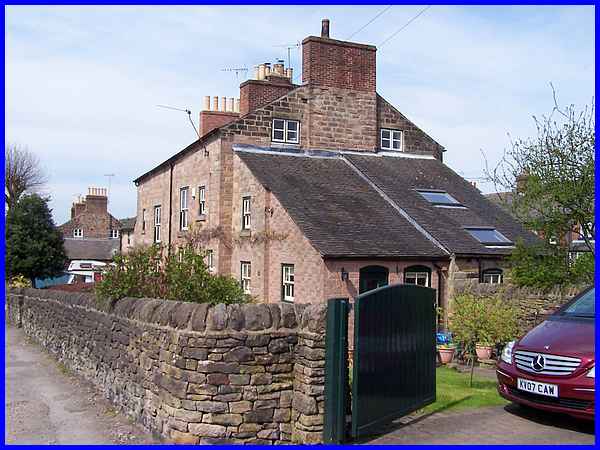
And immediately on the right on Joseph Street the leaflet points
out another fine example of a cluster house. Cluster buildings
were built about 1805 as blocks of four semi-detached houses,
back-to-back each having a garden, a privy and a pigsty some
of which still remain. A nearby resident that we spent some time
talking to, said that originally the "Rows" were for
the workers and the "Clusters" for management.
|
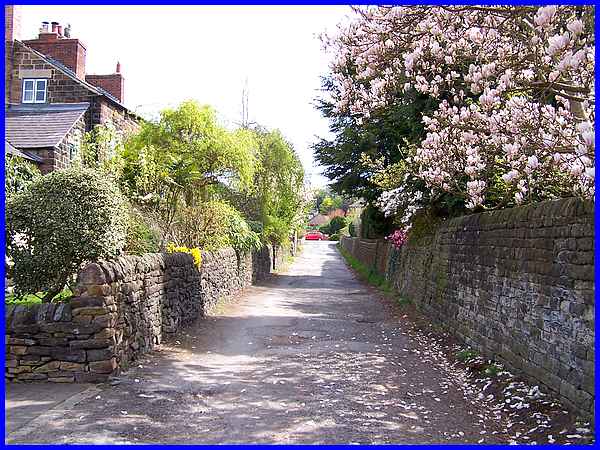
Turning left from the alley we followed Joseph Street back up
to Green Lane passing more cluster houses on the way.
|
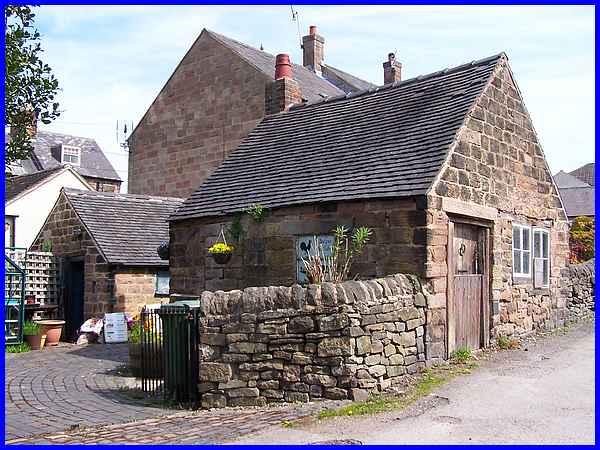
This is also where a Nail Shop is situated. This too dates from
the early nineteenth century and was one of a number of workshops
built to provide employment for men as most of the mill workers
employed by the Strutts were women and children. Nail making
became a major industry in Belper but had its roots in ancient
times when the trade supplied horse shoe nails to huntsmen who
followed the chase in the Forest of Duffield Frith. By the nineteenth
century Belper was supplying a great variety of nails worldwide
and today it is still remembered in the nickname of the town's
football team - the Nailers.
|

